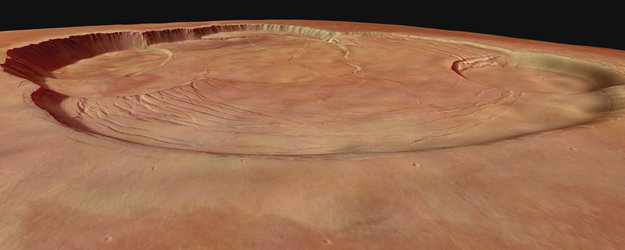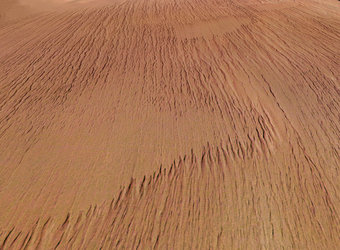Accept all cookies Accept only essential cookies See our Cookie Notice

About ESA
The European Space Agency (ESA) is Europe’s gateway to space. Its mission is to shape the development of Europe’s space capability and ensure that investment in space continues to deliver benefits to the citizens of Europe and the world.
Highlights
ESA - United space in Europe
This is ESA ESA facts Member States & Cooperating States Funding Director General Top management For Member State Delegations European vision European Space Policy ESA & EU Space Councils Responsibility & Sustainability Annual Report Calendar of meetings Corporate newsEstablishments & sites
ESA Headquarters ESA ESTEC ESA ESOC ESA ESRIN ESA EAC ESA ESAC Europe's Spaceport ESA ESEC ESA ECSAT Brussels Office Washington OfficeWorking with ESA
Business with ESA ESA Commercialisation Gateway Law at ESA Careers Cyber resilience at ESA IT at ESA Newsroom Partnerships Merchandising Licence Education Open Space Innovation Platform Integrity and Reporting Administrative Tribunal Health and SafetyMore about ESA
History ESA Historical Archives Exhibitions Publications Art & Culture ESA Merchandise Kids Diversity ESA Brand CentreLatest
Space in Member States
Find out more about space activities in our 23 Member States, and understand how ESA works together with their national agencies, institutions and organisations.
Science & Exploration
Exploring our Solar System and unlocking the secrets of the Universe
Go to topicAstronauts
Missions
Juice Euclid Webb Solar Orbiter BepiColombo Gaia ExoMars Cheops Exoplanet missions More missionsActivities
International Space Station Orion service module Gateway Concordia Caves & Pangaea BenefitsLatest
Space Safety
Protecting life and infrastructure on Earth and in orbit
Go to topicAsteroids
Asteroids and Planetary Defence Asteroid danger explained Flyeye telescope: asteroid detection Hera mission: asteroid deflection Near-Earth Object Coordination CentreSpace junk
About space debris Space debris by the numbers Space Environment Report In space refuelling, refurbishing and removingSafety from space
Clean Space ecodesign Zero Debris Technologies Space for Earth Supporting Sustainable DevelopmentLatest
Applications
Using space to benefit citizens and meet future challenges on Earth
Go to topicObserving the Earth
Observing the Earth Future EO Copernicus Meteorology Space for our climate Satellite missionsCommercialisation
ESA Commercialisation Gateway Open Space Innovation Platform Business Incubation ESA Space SolutionsLatest
Enabling & Support
Making space accessible and developing the technologies for the future
Go to topicBuilding missions
Space Engineering and Technology Test centre Laboratories Concurrent Design Facility Preparing for the future Shaping the Future Discovery and Preparation Advanced Concepts TeamSpace transportation
Space Transportation Ariane Vega Space Rider Future space transportation Boost! Europe's Spaceport Launches from Europe's Spaceport from 2012Latest

Destination Mars
Thank you for liking
You have already liked this page, you can only like it once!
Destination Mars
Lancée en 2003, la mission Mars Express de l’ESA a montré que de l’eau à l’état liquide avait un jour coulé sur la planète rouge, altérant sa géologie. Or s’il y a eu de l’eau, il peut y avoir eu de la vie.
ExoMars, programme conjoint de l’ESA et de l’Agence spatiale russe Roskosmos, assure l’exploration de Mars depuis l’orbite de la planète rouge et à sa surface. L’orbiteur d’ExoMars, pour la détection de gaz à l’état de trace procède à un inventaire détaillé de l’atmosphère martienne.
Une deuxième mission prévoit l’envoi d’un rover européen. Ce sera le premier engin à forer jusqu’à 2 mètres de profondeur, pour rechercher des signes d’une vie souterraine, à l’abri des rayonnements intenses, et recueillir des échantillons en vue de leur analyse par son laboratoire. L’ESA et ses partenaires internationaux prévoient également une série de missions destinées à rapporter sur Terre des roches martiennes.
Destination Mars
Launched in 2003, ESA’s Mars Express mission has shown that liquid water once flowed on the Red Planet, altering its geology. Where there was water, there may have been life.
ExoMars, a joint programme with Roscosmos, is exploring Mars from orbit and from the surface of the Red Planet. The ExoMars Trace Gas Orbiter is making a detailed inventory of the martian atmosphere.
A second mission will deploy a European rover that will be the first to drill up to 2 m below the surface. It will search for signs of life underground, where it is better protected from the harsh radiation environment and it will retrieve samples for analysis in its laboratory.
ESA and international partners are also planning a series of missions to bring Mars rocks back to Earth, the next step in the robotic exploration of Mars.
Image caption
Olympus Mons sur Mars, le plus haut volcan de notre Système solaire. Image de la caméra stéréo haute résolution de Mars Express de l'ESA.
Olympus Mons on Mars, the highest volcano in our Solar System. Image from the High Resolution Stereo Camera on ESA’s Mars Express.
-
CREDIT
ESA/DLR/FU Berlin (G. Neukum) -
LICENCE
ESA Standard Licence

Destination Mars

Detail of the complex caldera of Olympus Mons

Southern part of the Olympus Mons caldera – pe…

Perspective view of Olympus Mons caldera















 Germany
Germany
 Austria
Austria
 Belgium
Belgium
 Denmark
Denmark
 Spain
Spain
 Estonia
Estonia
 Finland
Finland
 France
France
 Greece
Greece
 Hungary
Hungary
 Ireland
Ireland
 Italy
Italy
 Luxembourg
Luxembourg
 Norway
Norway
 The Netherlands
The Netherlands
 Poland
Poland
 Portugal
Portugal
 Czechia
Czechia
 Romania
Romania
 United Kingdom
United Kingdom
 Slovenia
Slovenia
 Sweden
Sweden
 Switzerland
Switzerland
























